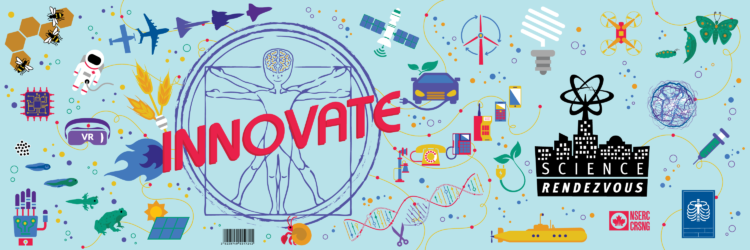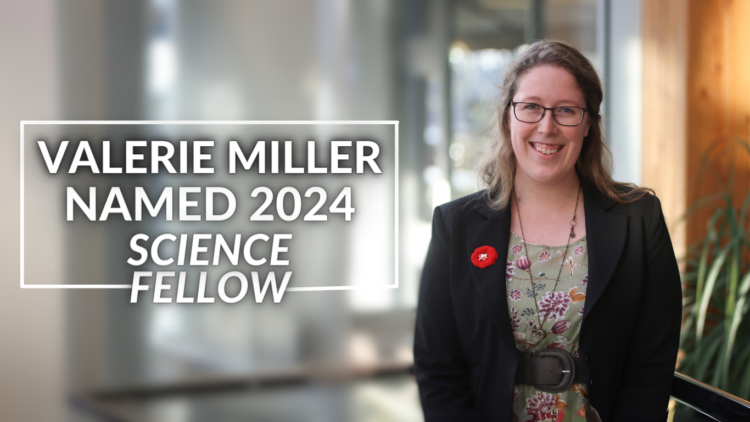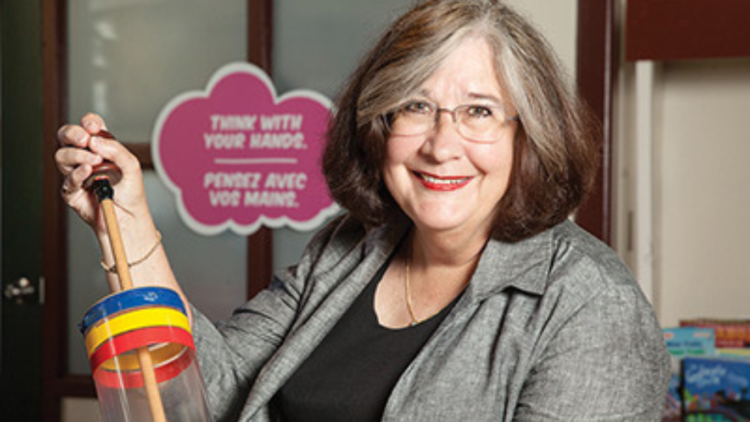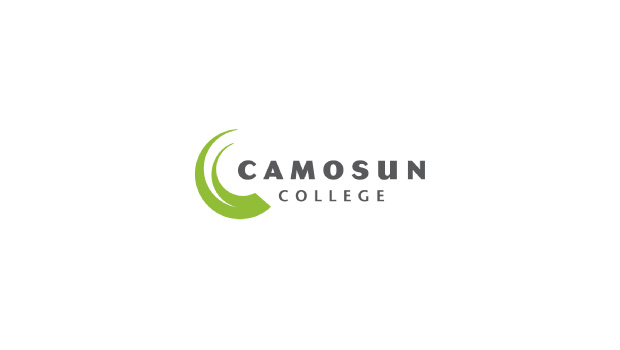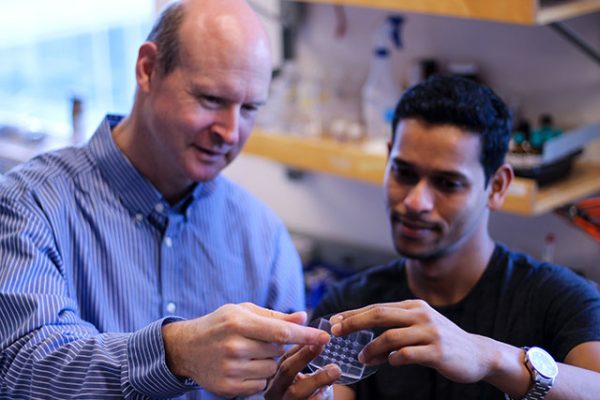
Mirza Saquib Sarwar & Prof. John D. Madden (UBC)
The work of Mirza Saquib Sarwar, PhD Candidate and NSERC CGS (Alexander Graham Bell) Scholarship Holder and John D. Madden, Professor of Electrical and Computer Engineering, Advanced Materials and Process Engineering Laboratory, UBC will be showcased along with Let’s Talk Science at the Old Barn Community Centre for Science Rendezvous.
They are working towards a smart skin that detects the proximity and touch of fingers to a surface. It is stretchable and bendable. It could be useful for:
- Providing touch sensation to robots, making it easier for them to work with humans, and to replicate human dexterity;
- Providing a transparent and stretchable touch interface that could be used on stretchable tablets or smart phones;
- In general this sensor array could be applied to any surface – kitchen cupboard, table top, floor, etc., to make it interactive.
- It is part of broader technology movements to make our devices more portable, wearable and connected.
The work is supported by NSERC through their Collaborative Research and Development Grant. This funding helped convince an industry partner to get involved in what is still early stage research. (The industry partner prefers to remain anonymous at this time.)
More information on the technology is available at:
https://scienceadvances.altmetric.com/details/17388664/news
http://advances.sciencemag.org/content/3/3/e1602200.full
Mirza Saquib Sarwar & Prof. John D. Madden (UBC)
Les travaux de Mirza Saquib Sarwar, doctorant et titulaire d’une bourse d’études supérieures du Canada (Alexander‑Graham‑Bell) du Conseil de recherches en sciences naturelles et en génie (CRSNG), et de John D. Madden, professeur de génie électrique et informatique, Advanced Materials and Process Engineering Laboratory, University of British Columbia (UBC), seront présentés par l’entremise de Parlons sciences au centre communautaire d’Old Barn dans le cadre de Science Rendezvous.
Les chercheurs tentent de créer une « peau intelligente » qui détecte la proximité des doigts et leur contact avec une surface. Cette peau extensible et flexible peut être utile aux fins suivantes:
- donner aux robots le sens du toucher afin qu’ils puissent plus facilement travailler avec des humains et reproduire leur dextérité;
- offrir une interface de contact transparente et extensible pour les tablettes ou les téléphones intelligents extensibles;
- en général, donner une fonction d’interactivité à n’importe quelle surface – armoires de cuisine, dessus de table, plancher, etc.;
- contribuer au plus vaste mouvement technologique qui vise à augmenter la portabilité et la connectivité de nos appareils.
Le CRSNG finance ces travaux à l’aide d’une subvention de recherche et développement coopérative. Grâce à ces fonds, un partenaire industriel a accepté de participer, même si les travaux n’en sont qu’à leur début. (Le partenaire industriel préfère garder l’anonymat pour l’instant.)
Vous trouverez davantage d’information sur la technologie à l’adresse suivante:
https://scienceadvances.altmetric.com/details/17388664/news
http://advances.sciencemag.org/content/3/3/e1602200.full


